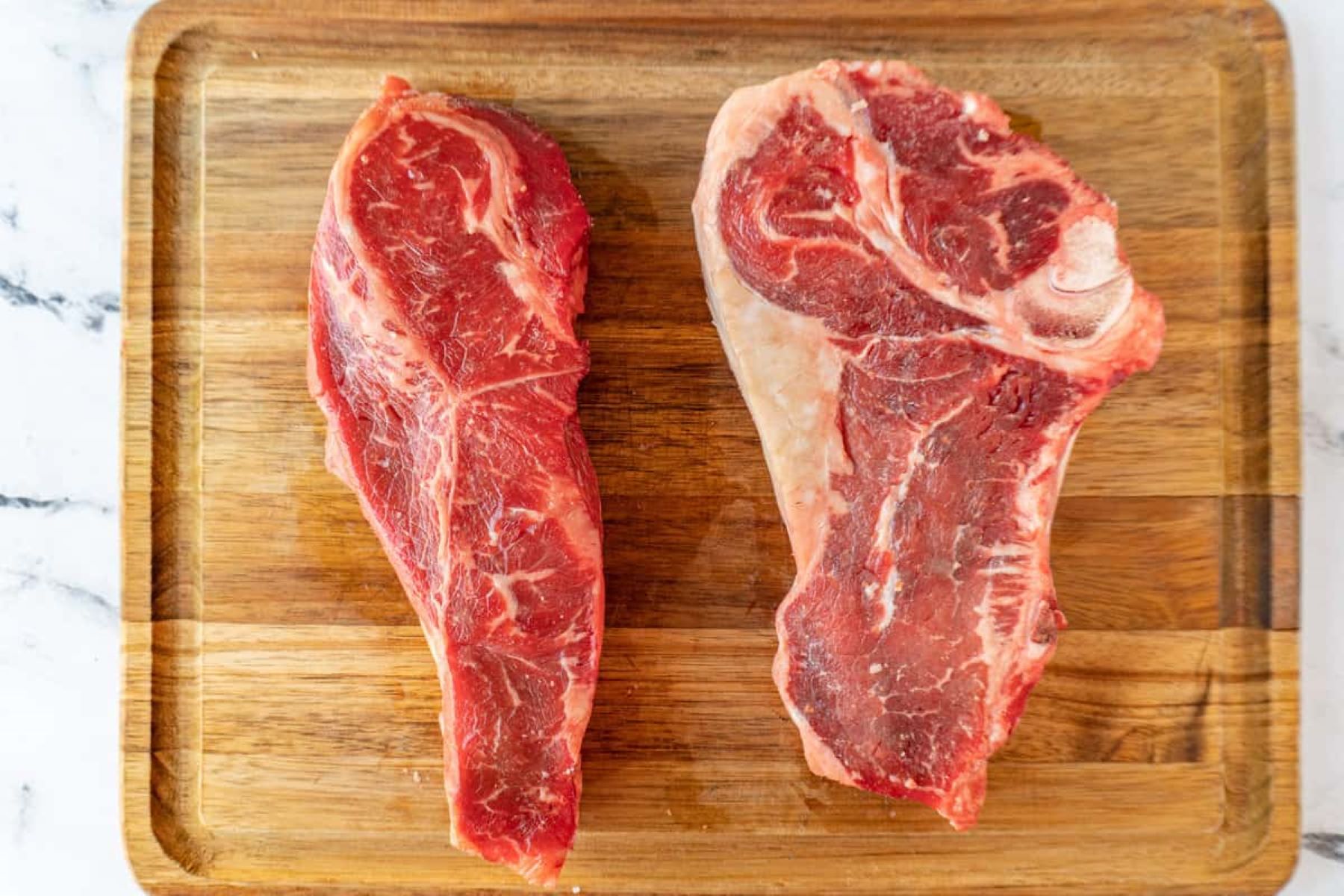Home>Food and Cooking>Pinot Grigio Vs Sauvignon Blanc: Which Is The Sweetest Wine?


Food and Cooking
Pinot Grigio Vs Sauvignon Blanc: Which Is The Sweetest Wine?
Published: February 6, 2024
Discover the sweetness of Pinot Grigio and Sauvignon Blanc wines in this comprehensive guide. Learn which wine is the perfect choice for your taste preferences. Explore more food and cooking tips and tricks.
(Many of the links in this article redirect to a specific reviewed product. Your purchase of these products through affiliate links helps to generate commission for Regretless.com, at no extra cost. Learn more)
Table of Contents
Introduction
When it comes to wine, the diversity of flavors and characteristics can be both intriguing and overwhelming. Among the myriad of wine options, Pinot Grigio and Sauvignon Blanc stand out as popular choices, each offering a unique profile that appeals to different palates. One common point of confusion among wine enthusiasts is the perceived sweetness of these two varietals. While both wines are celebrated for their crisp and refreshing qualities, their sweetness levels can vary significantly, leading to distinct sensory experiences.
In this article, we will delve into the characteristics of Pinot Grigio and Sauvignon Blanc, exploring their individual flavor profiles and the factors that contribute to their perceived sweetness. By understanding the nuances of these two popular wines, you will gain valuable insights that can enhance your appreciation and enjoyment of these delightful varietals. So, let's embark on a flavorful journey through the world of Pinot Grigio and Sauvignon Blanc, unraveling the mysteries of their sweetness and uncovering the distinctive qualities that set them apart.
Read more: Patients Vs. Patient’s: Which Is Correct?
The Characteristics of Pinot Grigio
Pinot Grigio, also known as Pinot Gris, is a white wine grape variety that originated in the Burgundy region of France. This versatile grape has since found its way to various wine regions around the world, including Italy, where it has gained widespread popularity and acclaim. The wine crafted from Pinot Grigio grapes is celebrated for its light and zesty nature, making it a beloved choice for casual gatherings and leisurely sipping.
Flavor Profile
Pinot Grigio is renowned for its crisp and vibrant flavors, often characterized by notes of citrus, green apple, and pear. These refreshing fruit elements contribute to its invigorating profile, providing a delightful burst of acidity that enlivens the palate. Additionally, subtle hints of floral undertones, such as jasmine or honeysuckle, may grace the aroma, adding a touch of elegance to the overall sensory experience.
Texture and Body
In terms of texture, Pinot Grigio typically exhibits a light to medium body, offering a smooth and approachable mouthfeel. This moderate weight on the palate, coupled with its refreshing acidity, makes it an ideal choice for warm weather or as aperitifs. The wine's clean and crisp finish further accentuates its refreshing appeal, leaving a lingering sensation that beckons another sip.
Versatility
One of the most enticing attributes of Pinot Grigio is its remarkable versatility. Its light and zesty character makes it a superb accompaniment to a wide array of dishes, ranging from seafood and salads to light pastas and appetizers. Whether enjoyed on its own or paired with a delectable meal, Pinot Grigio's adaptable nature ensures that it can effortlessly complement various culinary experiences.
Read more: You Too Vs. You, Too: Which Is Correct?
Aesthetic Qualities
When it comes to visual allure, Pinot Grigio typically displays a pale straw color in the glass, hinting at its refreshing and lively disposition. This visual charm, coupled with its enticing aroma and invigorating flavors, makes Pinot Grigio an alluring choice for those seeking a delightful white wine experience.
In essence, the characteristics of Pinot Grigio converge to create a wine that embodies brightness, approachability, and versatility. Its vibrant flavors, refreshing acidity, and moderate body make it a beloved selection for both casual gatherings and sophisticated soirees, offering a delightful sensory journey with every sip.
The Characteristics of Sauvignon Blanc
Sauvignon Blanc, a renowned white wine grape variety, has carved a prominent place in the world of oenology, captivating enthusiasts with its distinctive characteristics and vibrant personality. Originating in the Bordeaux region of France, Sauvignon Blanc has transcended geographical boundaries, thriving in diverse wine regions across the globe. This varietal's allure lies in its ability to encapsulate a spectrum of captivating flavors and aromas, making it a cherished choice for wine aficionados seeking a sensorial journey unlike any other.
Flavor Profile
Sauvignon Blanc is celebrated for its exuberant and expressive flavor profile, captivating the senses with a symphony of citrus, tropical fruits, and herbaceous notes. The wine often exudes intense aromas of zesty grapefruit, luscious passion fruit, and succulent guava, evoking a tantalizing tropical allure. These fruit-forward elements intertwine with herbaceous nuances, such as freshly cut grass, bell pepper, or even hints of lemongrass, adding layers of complexity to its aromatic tapestry.
Texture and Body
In terms of texture, Sauvignon Blanc typically presents a crisp and invigorating mouthfeel, underpinned by a refreshing acidity that enlivens the palate. The wine's light to medium body contributes to its approachable and versatile nature, making it an ideal companion for a myriad of culinary experiences. The vibrant acidity and clean, zesty finish further enhance its appeal, leaving a lasting impression that beckons another sip.
Versatility
Sauvignon Blanc's remarkable versatility extends beyond its captivating flavors and invigorating texture. This varietal's adaptability shines through in its ability to complement an array of dishes, ranging from fresh seafood and vibrant salads to herb-infused poultry and light, creamy cheeses. Whether savored on its own or paired with a delectable meal, Sauvignon Blanc's ability to elevate culinary experiences makes it a cherished selection for wine enthusiasts seeking a versatile and engaging white wine.
Read more: You Too Vs. You, Too: Which Is Correct?
Aesthetic Qualities
When poured into a glass, Sauvignon Blanc often showcases a pale straw hue, hinting at its vivacious and luminous character. Its visual allure, coupled with its captivating aroma and vibrant flavors, sets the stage for an enchanting wine experience that unfolds with each sip.
In essence, the characteristics of Sauvignon Blanc converge to create a wine that embodies vibrancy, versatility, and expressive allure. Its captivating flavors, invigorating acidity, and approachable body make it a beloved choice for both casual gatherings and refined occasions, offering a delightful sensory journey with every pour.
Comparing the Sweetness of Pinot Grigio and Sauvignon Blanc
When comparing the sweetness of Pinot Grigio and Sauvignon Blanc, it's essential to consider their distinct flavor profiles and sensory characteristics. Pinot Grigio, renowned for its crisp and vibrant nature, typically exhibits a dry profile with minimal residual sugar. The wine's refreshing acidity and bright fruit notes contribute to a clean and invigorating palate, devoid of overt sweetness. In contrast, Sauvignon Blanc, celebrated for its exuberant and expressive flavors, also tends to lean towards a drier profile, with the emphasis on zesty fruit and herbaceous nuances rather than perceptible sweetness.
While both wines are known for their refreshing qualities, the perceived sweetness of Pinot Grigio and Sauvignon Blanc can vary based on individual palates and the winemaking styles employed by different producers. Factors such as the ripeness of the grapes at harvest, fermentation techniques, and the presence of residual sugar can influence the perceived sweetness of the wines. However, in general, these two varietals are esteemed for their dry and crisp characteristics, making them popular choices for those seeking a refreshing and palate-cleansing wine experience.
It's important to note that the concept of sweetness in wine extends beyond the presence of residual sugar, encompassing the interplay of fruit flavors, acidity, and overall balance. While Pinot Grigio and Sauvignon Blanc may not exhibit overt sweetness in the traditional sense, their vibrant fruit notes and lively acidity contribute to a perceived sense of brightness and freshness, enhancing the overall sensory appeal without relying on residual sugar for sweetness.
Ultimately, the comparison of sweetness between Pinot Grigio and Sauvignon Blanc underscores their shared emphasis on crispness, vibrancy, and a dry profile, offering wine enthusiasts a delightful journey through nuanced flavors and invigorating textures. Whether enjoyed on a warm afternoon or paired with a delectable meal, these wines exemplify the artistry of crafting refreshing and versatile varietals that captivate the senses without relying on overt sweetness.
Factors Affecting the Sweetness of Wine
The perceived sweetness of a wine is influenced by an interplay of factors that extend beyond the presence of residual sugar, encompassing the grape variety, winemaking techniques, and the impact of terroir. Understanding these elements sheds light on the nuanced ways in which sweetness is perceived in different wine varietals, offering valuable insights into the artistry of winemaking and the sensory experiences they evoke.
Read more: US Vs UK Shameless: Which Reigns Supreme?
Grape Variety
The inherent characteristics of the grape variety play a pivotal role in determining the potential sweetness of the resulting wine. Some grape varieties, such as Riesling and Muscat, are renowned for their natural sweetness, stemming from the grapes' sugar content at the time of harvest. In contrast, varietals like Sauvignon Blanc and Pinot Grigio are celebrated for their crisp and dry profiles, with minimal residual sugar, emphasizing the role of grape variety in shaping the perceived sweetness of wine.
Ripeness at Harvest
The level of grape ripeness at the time of harvest significantly impacts the sugar content in the grapes, ultimately influencing the potential sweetness of the wine. Grapes harvested at optimal ripeness often exhibit higher sugar levels, potentially leading to a wine with a more pronounced sense of sweetness. Winemakers carefully assess the ideal moment for harvest, considering factors such as sugar accumulation, acidity, and flavor development to achieve the desired balance in the resulting wine.
Fermentation Techniques
The fermentation process is a critical determinant of a wine's sweetness, with different techniques offering varying levels of control over residual sugar. In the case of dry wines, yeast consumes the grape sugars during fermentation, converting them into alcohol and carbon dioxide. However, winemakers can halt the fermentation process before all the sugar is converted, leading to a wine with residual sweetness. This technique is commonly employed in the production of off-dry or sweet wines, showcasing the impact of fermentation on the final sweetness levels.
Terroir
The concept of terroir, encapsulating the environmental factors that influence grape cultivation, also contributes to the perceived sweetness of wine. Factors such as climate, soil composition, and vineyard microclimates can influence grape development, impacting sugar accumulation and flavor complexity. For instance, warmer climates may foster higher sugar levels in grapes, potentially yielding wines with a riper and perceived sweeter profile, highlighting the intricate relationship between terroir and wine sweetness.
Read more: The Ultimate Steakhouse Showdown: Ruth’s Chris Vs. Longhorn Vs. Outback – Which Reigns Supreme?
Balance and Perception
Beyond the presence of residual sugar, the overall balance of a wine, including its acidity, fruit flavors, and tannins, influences the perception of sweetness. Wines with vibrant acidity and pronounced fruit characteristics can create a sense of brightness and freshness, enhancing the overall sensory experience without relying on overt sweetness. This interplay of elements underscores the multifaceted nature of sweetness in wine, showcasing the artistry of achieving harmony and complexity in the glass.
In essence, the sweetness of wine is a multifaceted attribute shaped by the interplay of grape variety, ripeness at harvest, fermentation techniques, terroir, and the overall balance of the wine. By delving into these factors, wine enthusiasts gain a deeper appreciation for the art and science of winemaking, unraveling the intricate ways in which sweetness is perceived and celebrated in the diverse world of wine.
Conclusion
In the realm of wine exploration, the journey through the contrasting yet captivating worlds of Pinot Grigio and Sauvignon Blanc unveils a tapestry of sensory delights and nuanced flavors. As we navigate the characteristics of these esteemed varietals, it becomes evident that their allure extends far beyond the concept of sweetness, encompassing a symphony of vibrant aromas, invigorating textures, and versatile profiles that beckon wine enthusiasts to savor each nuanced sip.
Pinot Grigio, with its lively citrus notes, subtle floral undertones, and approachable body, epitomizes brightness and versatility. Whether enjoyed as a standalone indulgence or paired with an array of culinary delights, this beloved varietal exudes a refreshing charm that transcends casual gatherings and sophisticated affairs, inviting enthusiasts to revel in its invigorating embrace.
On the other hand, Sauvignon Blanc captivates the senses with its exuberant fruit expressions, herbaceous nuances, and invigorating acidity, offering a sensorial journey that unfolds with each tantalizing sip. Its vibrant personality and remarkable adaptability make it a cherished companion for a diverse array of gastronomic experiences, elevating moments of indulgence with its expressive allure.
As we compare the perceived sweetness of these wines, it becomes evident that their shared emphasis on crispness, vibrancy, and a dry profile transcends traditional notions of sweetness. While both varietals may not prominently showcase residual sugar, their enchanting flavors, lively acidity, and overall balance create a sense of brightness and freshness that captivates the palate, inviting enthusiasts to revel in the artistry of crafting refreshing and versatile wines.
Furthermore, the factors influencing the sweetness of wine, from grape variety and ripeness at harvest to fermentation techniques and terroir, offer profound insights into the intricate interplay of elements that shape the sensory experiences we cherish. This deeper understanding illuminates the craftsmanship and artistry of winemaking, underscoring the multifaceted nature of sweetness in wine and the harmonious balance that defines a captivating pour.
In essence, the journey through the world of Pinot Grigio and Sauvignon Blanc transcends the quest for sweetness, inviting wine enthusiasts to embrace the diverse tapestry of flavors, textures, and aromas that define these esteemed varietals. With each glass, a symphony of sensory delights unfolds, weaving a narrative of vibrancy, versatility, and expressive allure that lingers on the palate, beckoning enthusiasts to savor the essence of these beloved wines.
As we conclude this flavorful expedition, let us raise our glasses to the artistry of winemaking, the diversity of wine experiences, and the enduring allure of Pinot Grigio and Sauvignon Blanc, celebrating the timeless joy of indulging in a delightful pour that transcends sweetness and embraces the captivating essence of wine. Cheers to the vibrant journey that awaits with each sip, a testament to the enduring legacy of these cherished varietals in the world of oenology.











